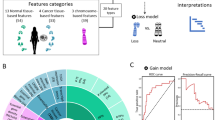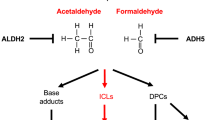Abstract
Progesterone, through its nuclear receptors (PR), regulates the development and growth of breast cancers. PR also serve as markers of hormone dependence and prognosis in patients with this disease, and functional PR are required to mediate the antiproliferative effects of progestin therapies. We find that normal and malignant breast cells and tissues can express anomalous forms of PR transcripts. We have isolated four variant PR mRNAs that contain precise deletions of exons encoding sections of the DNA- and hormone-binding domains. The transcripts lack exon 2 (PRΔ2), exon 4 (PRΔ4), exon 6 (PRΔ6), or exons 5 and 6 (PRΔ5,6). On immunoblots, PRΔ4, Δ6, and Δ5, 6 cloned into the background of the PR A-isoform comigrate with similar proteins present in breast tumor extracts; Δ6 and Δ5, 6 are dominant-negative transcriptional inhibitors of wild-type A- and B-receptors. We propose that expression of variant PR can compromise the accuracy of receptor measurements as markers of hormone-dependent cancers, and can modify the responses of tumors to progestin therapies.
Similar content being viewed by others
References
Clarke CL, Sutherland RL: Progestin regulation of cellular proliferation. Endocr Rev 11: 266–302, 1990
Horwitz KB: The molecular biology of RU486. Is there a role for antiprogestins in the treatment of breast cancer? Endocr Rev 13: 146–163, 1992
Horwitz KB, McGuire WL, Pearson OH, Segaloff A: Predicting response to endocrine therapy in human breast cancer: a hypothesis. Science 189: 726–727, 1975
Clark GM, McGuire WL, Hubay CA: Progesterone receptors as a prognstic factor in stage II breast cancer. N Engl J Med 309: 1343–1347, 1983
Ponglikitmongkol M, Green S, Chambon P: Genomic organization of the human oestrogen receptor gene. EMBO J 7: 3383–3388, 1988
Fuqua SAW, Fitzgerald SD, Chamness GC, Tandon AK, McDonnell DP, Nawaz Z, O'Malley BW, McGuire WL: Variant human breast tumor estrogen receptor with constitutive transcriptional activity. Cancer Res 51: 105–109, 1991
Koehorst SGA, Jacobs HM, Tilanus MGJ, Bowens AGM, Thijssen JHH, Blankenstein MA: Aberrant oestrogen receptor species in human meningioma tissue. J Steroid Biochem Mol Biol 43: 57–61, 1992
Skipper JK, Young LJ, Bergeron JM, Tetzlaff MT, Osborn CT, Crews D: Identification of an isoform of oestrogen receptor mRNA lacking exon four and present in the brain. Proc Natl Acad Sci USA 90: 7172–7175, 1993
Kuiper GGJM, Enmark E, Pelto-Huikko M, Nilsson S, Gustafsson J: Cloning of a novel estrogen receptor expressed in rat prostate and ovary. Proc Natl Acad Sci USA 93: 5925–5930, 1996
Pfeffer U, Fecarotta E, Vivaldi G: Coexpression of multiple estrogen receptor variant messenger RNAs in normal and neoplastic breast tissues and in MCF-7 cells. Cancer Res 55: 2158–2165, 1995
Smith EP, Boyd J, Frank GR, Takahashi H, Cohen RM, Specker B, Williams TC, Lubahn DB, Korach KS: Estrogen resistance caused by a mutation in the estrogen-receptor gene in a man. N Engl J Med 331: 1056–1061, 1994
Wilson CM, McPhaul MJ: A and B forms of the androgen receptor are present in human genital skin fibroblasts. Proc Natl Acad Sci USA 91: 1234–1238, 1994
Brown TR, Lubahn DB, Wilson EM, Joseph DR, French FS, Migeon CJ: Deletion of the steroid binding domain of the human androgen receptor gene in one family with complete androgen insensitivity syndrome: Evidence for further genetic heterogeneity in this syndrome. Proc Natl Acad Sci USA 85: 8151–8155, 1988
Toplin ME, Bubley GJ, Shuster TD, Frantz ME, Spooner AE, Ogata GK, Keer HN, Balk SP: Mutation of the androgen receptor gene in metabolic androgen-independent prostate cancer. N Engl J Med 332: 1393–1398, 1995
Bamberger CM, Bamberger AM, deCastro M, Chrousos GP: Glucocorticoid receptor beta, a potential endogenous inhibitor of glucocorticoid action in humans. J Clin Invest 95: 2435–2441, 1995
Ashraf J, Thompson EB: Identification of the activation-labile gene: A single point mutation in the human glucocorticoid receptor presents as two distinct receptor phenotypes. Mol Endocrinol 7: 631–642, 1993
Kastner P, Mark M, Chambon P: Nonsteroid nuclear receptors: What are genetic studies telling us about their role in real life? Cell 83: 859–869, 1995
Sakurai A, Takeda K, Ain K, Ceccarelli P, Nakai A, Seino S, Bell GI, Refetoff S, DeGroot LJ: Generalized resistance to thyroid hormone associated with a mutation in the ligandbinding domain of the human thyroid receptor ?. Proc Natl Acad Sci USA 86: 8977–8981, 1989
Usala SJ, Tennyon GE, Bole AE, Lash RW, Gesundheit N, Wondisford EE, Accili D, Hauser P, Weintraub BD: A base mutation of the c-erbA??thyroid hormone receptor in a kindred with thyroid hormone resistance. Molecular heterogeneity in two other kindreds. J Clin Invest 85: 93–100, 1990
Horwitz KB, Alexander PS: In situ photolinked nuclear progesterone receptors of human breast cancer cells: Subunit molecular weights after transformation and translocation. Endocrinology 113: 2195–2201, 1983
Wei LL, Gonzalez-Aller C, Wood WM, Horwitz KB: 5?-heterogeneity in human progesterone receptor transcripts predicts a new amino-terminal truncated ‘C’-receptor and unique A-receptor messages. Mol Endocrinol 4: 1833–1840, 1990
Kastner P, Krust A, Turcotte B, Stropp U, Tora L, Gronemeyer H, Chambon P: Two distinct estrogen-regulated promoters generate transcripts encoding the two functionally different human progesterone receptor forms A and B. EMBO J 9: 1603–1614, 1990
Spelsberg TC, Halberg F: Circannual rhythms in steroid concentration and nuclear binding in the chick oviduct. Endocrinology 107: 1234–1244, 1980
Boyd-Leinen PA, Fournier D, Thomas CS: Nonfunctioning progesterone receptors in the developed oviducts from estrogen-withdrawn immature chicks and in aged nonlaying hens. Endocrinology 111: 30–36, 1982
Kato J, Hirata S, Nozawa A, Mouri N: The ontogeny of gene expression of progestin receptors in the female rat brain. J Steroid Biochem Mol Biol 47: 173–182, 1993
Sartorius CA, Groshong SD, Miller LA, Powell RP, Tung L, Takimoto GS, Horwitz KB: New T47D breast cancer cell lines for the independent study of progesterone B-and A-receptors: Only antiprogestin-occupied B-receptors are switched to transcriptional agonists by cAMP. Cancer Res 54: 3868–3877, 1994
Sartorius CA, Melville MY, Hovland AR, Tung L, Takimoto GS, Horwitz KB: A third transactivation function (AF3) of human progesterone receptors located in the unique N-terminal segment of the B-isoform. Mol Endocrinol 8: 1347–1360, 1994
Vegeto E, Shahbaz MM, Wen DX, Goldman ME, O'Malley BW, McDonnell DP: Human progesterone receptor A form is a cell and promoter specific repressor of human progesterone receptor B function. Mol Endocrinol 7: 1244–1255, 1993
Sartorius CA, Tung L, Takimoto GS, Horwitz KB: Antagonist-occupied human progesterone receptors bound to DNA are functionally switched to transcriptional agonists by cAMP. J Biol Chem 5: 9262–9266, 1993
Wei LL, Miner R: Evidence for the existence of a third progesterone receptor protein in human breast cancer cell line T47D. Cancer Res 54: 340–343, 1994
Graham JD, Yeates C, Balleine RL, Harvey SS, Milliken JS, Bilous AM, Clarke CL: Characterisation of progesterone receptor A and B expression in human breast cancer. Cancer Res 55: 5063–5068, 1995
Misrahi M, Atger M, d'Auriol L, Loosfelt H, Meriel C, Fridlansky F, Guiochon-Mantel A, Galibert F, Milgrom E: Complete amino acid sequence of the human progesterone receptor deduced from cloned DNA. Biochem Biophys Res Commun 143: 740–748, 1987
Sun-Yu N, Gunning P, Eddy R, Ponte P, Leavitt J, Shows T, Kedes L: Evolution of the functional human ?-actin gene and its multi-pseudogene family: Conservation of noncoding regions and chromosomal dispersion of pseudogenes. Mol Cell Biol 5: 2720–2732, 1985
Southern EM: Detection of specific sequences among DNA fragments separated by gel electrophoresis. J Mol Biol 98: 503–517, 1975
Kastner P, Bocquel MT, Turcotte B, Garnier JM, Horwitz KB, Chambon P, Gronemeyer H: Transient expression of human and chicken progesterone receptors does not support alternative translational initiation from a single mRNA as the mechanism generating two receptor isoforms. J Biol Chem 265: 12163–12167, 1990
Lange-Carter CA, Johnson GL: Assay of MEK kinases. Meth Enzymol 255: 290–301, 1995
Tora L, Mullick A, Metzger D, Ponglikitmongkol M, Park I, Chambon P: The cloned human oestrogen receptor contains a mutation which alters its hormone binding properties. EMBO J 8: 1981–1986, 1989
Madsen MW, Reiter BE, Lykkesfeldt AE: Differential expression of estrogen receptor mRNA splice variants in the tamoxifen resistant human breast cancer cell line, MCF-7/TAMR-1 compared to the parental MCF-7 cell line. Mol Cell Endocrinol 109: 197–207, 1995
Truss M, Beato M: Steroid hormone receptors: interaction with deoxyribonucleic acid and transcription factors. Endocr Rev 14: 459–479, 1995
Horwitz KB, Jackson TA, Bain DL, Richer JK, Takimoto GS, Tung L: Nuclear receptor coactivators and corepressors. Mol Endocrinol 10: 1167–1177, 1996
Leygue E, Dotzlaw H, Watson PH, Murphy LC: Identification of novel exon-deleted progesterone receptor variant mRNAs in human breast tissue. Biochem Biophys Res Commun 228: 63–68, 1996
McGuire WL, Clark GM, Dressler LG, Owens MA: Role of steroid hormone receptors as prognostic factors in primary breast cancer. NCI Monogr 1: 19–23, 1986
Sedlacek SM, Horwitz KB: The role of progestins and progesterone receptors in the treatment of breast cancer. Steroids 44: 467–484, 1984
Fitzgerald PA: Handbook of Clinical Endocrinology. Prentice Hall, Englewood Cliffs, NJ, 1992
Horwitz KB: Editorial: When tamoxifen turns bad. Endocrinology 136: 821–823, 1995
Author information
Authors and Affiliations
Rights and permissions
About this article
Cite this article
Richer, J., Lange, C., Wierman, A. et al. Progesterone receptor variants found in breast cells repress transcription by wild-type receptors. Breast Cancer Res Treat 48, 231–241 (1998). https://doi.org/10.1023/A:1005941117247
Issue Date:
DOI: https://doi.org/10.1023/A:1005941117247




